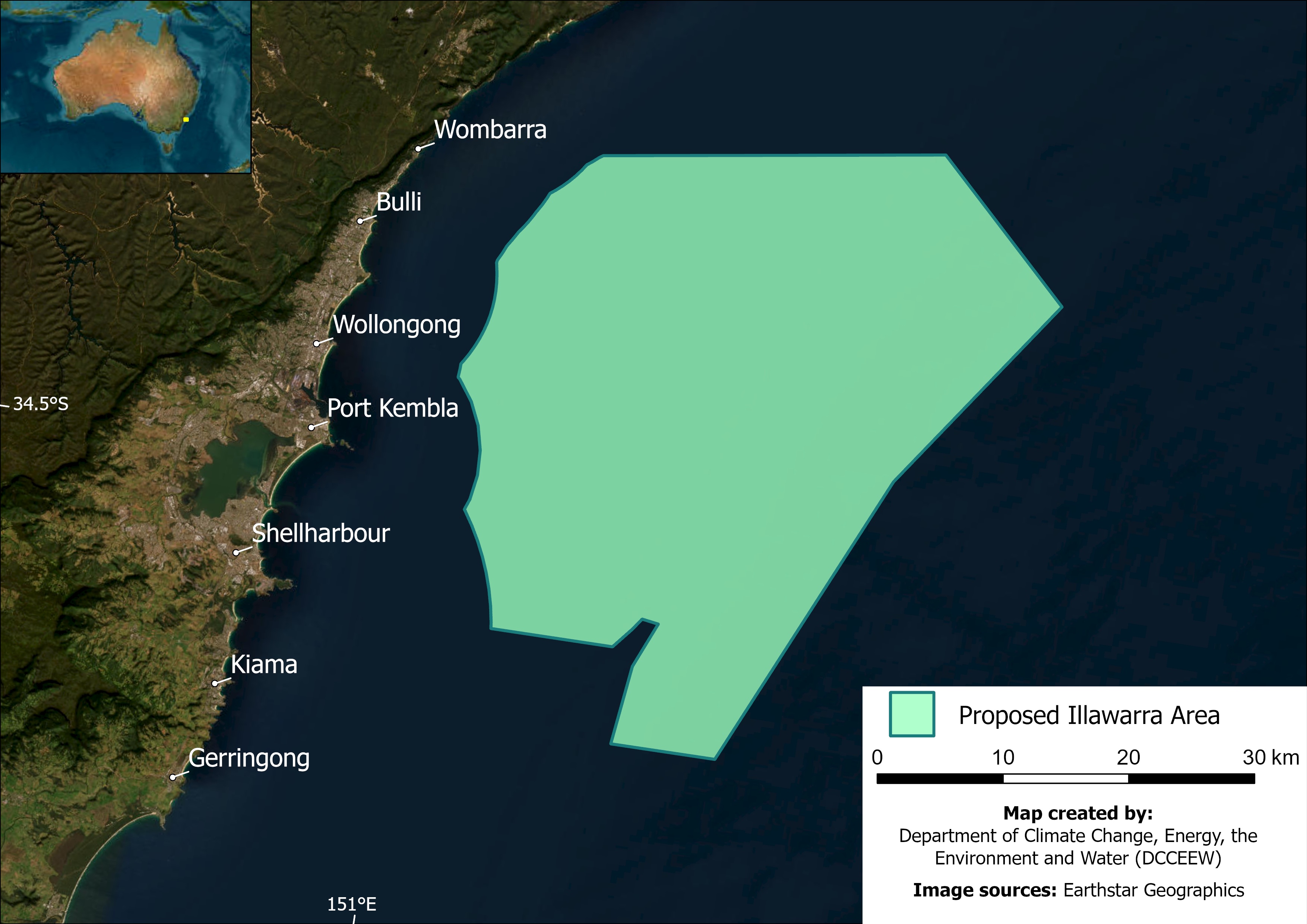Ask an Energy Expert: Why not nuclear, solar or onshore wind?
Do you have a question about offshore wind? Submit article suggestions via our Get In Touch page

In the old days, as Endeavour Energy’s ‘chief engineer’, Ty Christopher remembers when people’s interest in their power supply came down to hot water and cold beer.
“Now that's changed,” says Ty, who left the corporate world in 2020 after 37 years in the power industry and is now the Director of Energy Futures Network at the University of Wollongong.
“People are personally a lot more invested in being in control of their energy use, their home energy, their energy footprint and their lives. As a career power engineer, I'd say hallelujah. At least we as citizens have taken action. Because can I tell you, all the big lumbering companies and regulators are still late to the party.”
The party in question being, of course, renewable energy.
Of all the renewable sources, however, Ty says only offshore wind has the capacity factor to replace coal power and help Australia achieve its emissions targets in the next decade. The proposed Illawarra zone alone would generate enough energy to make a big difference to the national grid.
“It’s a pretty good match for Eraring, the biggest coal-fired power plant in Australia,” he says.
Opponents of the proposed Illawarra offshore wind area – which would cover 1461sq km from Wombarra to Kiama – have suggested other options, from nuclear to on-shore turbines, preferably on land far far away. All of these are impractical, Ty says.
“Coal's ageing out of the system. We need high capacity factor generation to replace it. And soon.
“Technology that's viable for the capacity we need – it is build a new coal-fired power plant, build a new gas-fired power plant, build an offshore wind industry or build nuclear power plants.”
Thanks to Ty for talking us through the alternatives.
Why not nuclear?
In the climate emergency, time is precious.
“The reality of where we're sitting at the moment with nuclear is nuclear power is not legal in Australia,” Ty says. “There’s only one legally allowed nuclear reactor here in Australia, it is the one up at Lucas Heights. There is an entire legal framework that needs to be established just for nuclear to even start the process to exist as an industry in Australia.
“Quite frankly it can't happen within the timeframe that we're talking about, which is the zero to 10 years from where we are now.”
“As an engineer and a scientist, I think nuclear is best framed as a missed opportunity for our nation in terms of decarbonisation. Had we as a nation started this journey three decades ago …We would be in a very different situation now and not still relying on fossil fuel for 70% of our electricity.”
The other problem with nuclear energy is its huge cost.
“No one can come up with where the money for it is going to come from. And that means government's going have to pay for it, and that means we are going to have to pay for it. And it's going to be very expensive.
“So while I don't like simple headlines, the nuclear discussion for a solution to decarbonise our electricity at the moment really fits in the category of too expensive and too late.”
Why not solar?
Rooftop solar can’t power steel manufacturing, heavy industry or city centres, he says. The wires connecting homes to the grid are too thin and the grid was not designed to ship massive amounts of energy upstream. “Home solar is great and will form a massive part of our future and needs to be embraced and, frankly, leveraged to a far greater extent than it is at the moment. But it will not deliver the big grid solutions.
“You won't run the Tomago Aluminium smelter. That's a gigawatt of load on its own. You won't run that off solar on homes. The physics prevent you from doing it. You need multi-gigawatt scale, big-grid solutions in order to replace the multi-gigawatt scale big-grid solutions that coal, in particular, is delivering for us at the moment. Plus there is the fact that the sun only shines usefully for about one quarter of the day.”
Why not onshore wind?
Onshore wind is not as consistent as offshore wind, plus, you can build bigger turbines at sea.
“The reason why people are legitimately expressing their concerns over visual amenity and visual impact of offshore wind is also one of the reasons why offshore wind is so important, critical and potentially valuable in our renewable energy landscape,” Ty says.
“The size of them means you can have multi-gigawatt-scale offshore, which you can't really do on shore because of the sheer physical size of them, the impact of them visually and environmentally, and also because of the land area that would be required to get to multi-gigawatt scale with onshore wind.
“Realistically, onshore wind is still practically operating in the hundreds of megawatt scale – mega not giga.”
Factor in the lower 30% capacity factor of onshore wind and the same wind farm offshore would need to take up at least twice the area on land.
The other problem with onshore wind power is its delivery.
“We like to think we're all rough, tough bushies here in Australia,” Ty says. “We're not, we're all thin-blooded coasties that live in a little strip of land by the sea. So that's where the energy's used,
“If you build wind farms inland, you're going to need to spend billions upon billions on new transmission lines to get the power to where it's going to be needed. And you're going to affect all of those people and all of that land to do all of that. All of those factors are going to be accretive to what we pay for our electricity.
“So let's put the windmills inland? The answer is, okay, let's pay four times as much and have multiple impacts on the land-based ecology and environment, compared to having a discussion about the material impact on the marine ecology of offshore wind.”
Everything has an impact
No power source is zero impact, Ty says, and we need to think about the impacts of continuing to burn coal and fossil fuels.
“What happens to ocean life with a two and a half or three degrees Celsius heating of the planet, as opposed to what happens to the local marine environment, in one defined area, from the impacts of offshore wind?
“That is absolutely a trade-off.
“It is one we need to, I think, be expecting the highest standards of objectivity and fact-based analytics and research to examine, but I don't believe the risk of [offshore wind] is a reason to discard it outright as an option.
“There's been a lot of talk about whale migration. Have a look at our FAQs. Studies done in Australia show that 89% of whale migration on the east coast occurs between zero and 5km out from the shore. The median distance is 2.5 kilometres. The closest that they're proposing for the zone of the wind farm here in the Illawarra is 10km. So twice the distance that the majority of whales actually use as a migration corridor.”
That study was done in Queensland and the Illawarra would still need to conduct detailed environmental assessments, Ty says. "It is upon us as a region to hold people to account to do that, and to do that with the appropriate standard of rigour.”
“There's lots of talk about the Nimby, Not In My Backyard, and ‘I’m all in favour of renewable energy, but just not here'.
"That's a bit of a cop out, quite frankly.
“There's such a huge opportunity for us as a region here. The common ground in all of this is care for our local environment – it just is it a care for the long-term of that local environment, how it sits in the macro picture, or care for the actual micro of that environment.
"The big picture is what we need to look at, not just the small picture.”
Have your say
The Department of Climate Change, Energy, the Environment and Water is calling for feedback on the Illawarra offshore area proposed for future renewable energy projects. Click here to have your say by November 15.

FAQ at UOW
Independent experts at the University of Wollongong have compiled a list of FAQs, which can be read on the Blue Energy Futures Lab website. Here the team share evidence-based research from around the world on various aspects of offshore wind farms, summarise the findings of that research to make it more accessible to the public, highlight where they think more research needs to be done and generally provide people with information to better understand the issues involved. The Blue Energy Futures Lab has not received any industry funding and does not have any industry collaborations.
Questions welcome
Do you have a question about offshore wind? Submit article suggestions via our Get In Touch page.
Find more Ask An Expert articles in the Flame's Road to Renewables section.
Read more interviews with Ty Christopher
- The Why of Offshore Wind
- Why not nuclear, solar or onshore wind?
- Get the numbers on nuclear energy
- Meet electrical engineer Ty Christopher, Energy Futures Network Director at UOW





